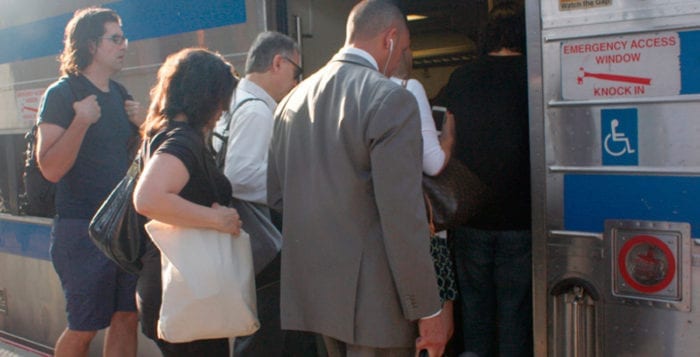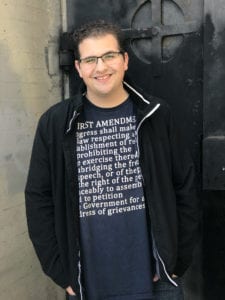By Donna Deedy
New York State Attorney General’s office announced March 28 that it has expanded a lawsuit against opioid manufacturers, distributors and members of the Sackler family, whose company Purdue Pharma made and marketed OxyContin.
The lawsuit, originally filed in Suffolk County, has now become the nation’s most extensive case to date to legally address the opioid crisis.
Suffolk County Executive Steve Bellone (D)applauded the move.
“It is our hope that our lawsuit, and ones like it, will bear fruit that forever changes the way destructive—but profitable—drugs are marketed and sold across the nation,” he said.
“As the Sackler Family and the other defendants grew richer, New Yorkers’ health grew poorer and our state was left to foot the bill.”
— Letitia James
The lawsuit alleges that six national prescription opioid manufacturers, four prescription drug distributors and members of the Sackler family are largely responsible for creating the opioid epidemic through years of false and deceptive marketing that ignored their obligation to prevent unlawful diversion of the addictive substance.
The amended lawsuit includes Attorney General Letitia James’ findings from a multi-year, industry-wide investigation of opioid market participants, which alleges that manufacturers implemented a common “playbook” to mislead the public about the safety, efficacy, and risks of their prescription opioids.
“Manufacturers pushed claims that opioids could improve quality of life and cognitive functioning, promoted false statements about the non-addictive nature of these drugs, masked signs of addiction by referring to them as “pseudoaddiction” and encouraged greater opioid use to treat it, and suggested that alternative pain relief methods were riskier than opioids, among other grossly misleading claims,” the attorney general’s office stated in its summary of the amended suit. The office claims that manufacturers used a vast network of sales representatives to push dangerous narratives and target susceptible doctors, flood publications with their deceptive advertisements, and offer consumer discount cards and other incentives to them to request treatment with their product.
The manufacturers named in the amended complaint include Purdue Pharma and its affiliates, members of the Sackler family (owners of Purdue) and trusts they control, Janssen Pharmaceuticals and its affiliates (including parent company Johnson & Johnson), Mallinckrodt LLC and its affiliates, Endo Health Solutions and its affiliates, Teva Pharmaceuticals USA, Inc. and its affiliates and Allergan Finance, LLC. The distributors named in the complaint are McKesson Corporation, Cardinal Health, Inc., Amerisource Bergen Drug Corporation and Rochester Drug Cooperative, Inc.
“As the Sackler Family and the other defendants grew richer, New Yorkers’ health grew poorer and our state was left to foot the bill,” James stated. “The manufacturers and distributors of opioids are to blame for this crisis and it is past time they take responsibility.”
“This company and company’s owners knew the addictive quality and used it for financial gain.”
— Kara Hahn
The opioid epidemic has ravaged families and communities nationwide and across New York. Suffolk County has been particularly hard hit statewide. When the county originally filed its lawsuit, legislators reported that the region suffered the highest number of heroin deaths statewide. Between 2009 and 2013, 418 people died of a heroin overdose. Many people turned to heroin when their prescriptions ran out. The opioid related death tolls have continued to rise.According to New York State Health Department data for 2017, opioid pain relievers, including illicitly produced fentanyl, caused 429 deaths in Suffolk County. Over six thousand people were admitted for opioid addiction, including heroin, into the counties Office of Alcohol and Substance Abuse Services.
“I applaud New York State Attorney General James for joining in our efforts to recoup untold amounts of public funds that were spent to assist those afflicted by this epidemic,” Bellone stated. “Suffolk County is taking a page out of Big Tobacco’s playbook to hold the Sackler family and others accountable for their role in connection with the opioid crisis.
The Suffolk County legislature is proceeding with their lawsuit as it was originally put forward, but officials agreed with the state’s initiative.
“The pharceutical companies opened the flood gates,” said county Legislator Sarah Anker (D-Mt. Sinai). “I agree the Sacklers should be targeted for a lawsuit.”
County Legislators Anker, Kara Hahn (D-Port Jefferson) and William Spencer (D-Centerport) originally co-sponsored the bill.
“It’s an incredibly important that all responsible be held accountable,” Hahn said. “This company and company’s owners knew the addictive quality and used it for financial gain.”



















































